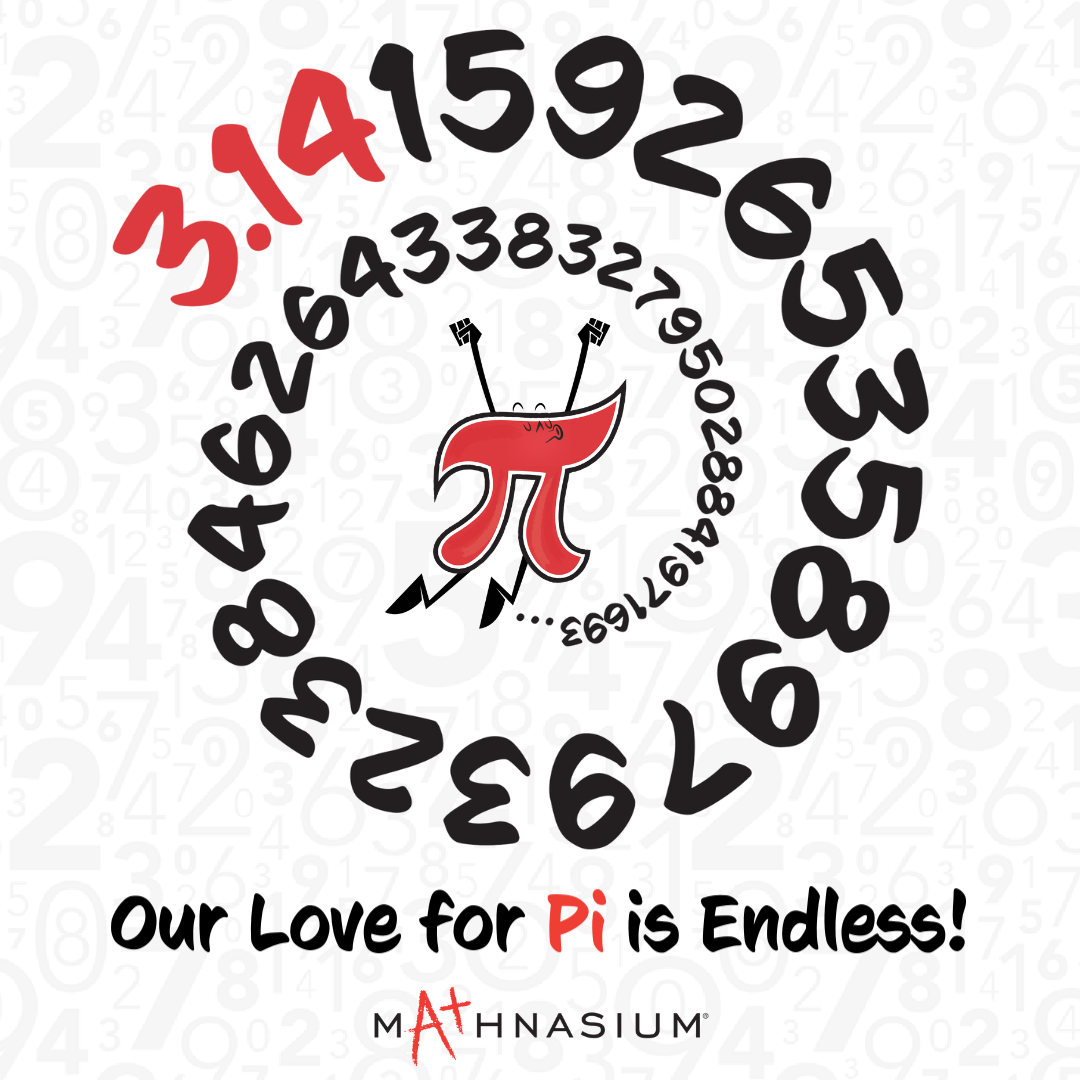The Beauty of Math Patterns: Exploring Mathematical Sequences
Explore the fascinating world of math patterns, from Fibonacci sequences to fractals. Read our blog to learn more.

It’s our favorite time of year again! March 14 marks another math holiday to celebrate the mathematical constant pi (π), reminding us that math is fun and applicable outside the math classroom.
Pi is the ratio of a circle’s circumference (C) to its diameter (d). In other words, the distance around a circle divided by the distance across the circle is always the same number: π = C⁄d. You can take any perfect circle and divide these two measurements to get ~22⁄7 or ~3.14. Since pi is an irrational number, it goes on forever and ever without repeating a pattern!
Just like its digits, pi’s uses extend infinitely. NASA (National Aeronautics and Space Administration) has told us that pi’s uses go beyond Earth, from operating a parachute on Mars and getting new perspectives on Saturn, to talking to spacecraft.1 But mathematicians, physicists, and engineers are not the only ones to recognize the beauty of pi. Artists have taken this irrational number and created stunning pieces to display its wonder.2
Now it is you and your child’s turn to explore pi. Download our activities to discover as many digits of pi as you can and create your own pi art pieces. Collect circular objects and find the ratio between their circumference and diameter. Record your child’s measurements in the table provided and calculate the approximation of pi. Vary the sizes of circles. For example: a coin, cookie, and a hula-hoop.
Invite friends and family members to join the fun! Here are some more facts about this mathematical wonder.
Pi never ceases to amaze us. Just like the digits of pi, we hope your love for and curiosity about math goes on forever and ever!
Contact your nearest Mathnasium Learning Center to find out how they will celebrate pi. Whether you spend the day eating circle-shaped foods, memorizing the digits of pi, or making pi art, be sure to follow us on social media, tell us how you marked this special day, and don’t forget to tag us. We’ll be watching for your posts!
Sources:
1. Jet Propulsion Laboratory: California Institute of Technology. 18 Ways NASA Uses Pi. Retrieved from https://www.jpl.nasa.gov/edu/learn/list/oh-the-places-we-go-18-ways-nasa-uses-pi/.
2. Swanson, A. (2015). 10 stunning images show the beauty hidden in pi. Washington Post. Retrieved from: https://www.washingtonpost.com/news/wonk/wp/2015/03/14/10-stunning-images-show-the-beauty-hidden-in-pi/


Mathnasium meets your child where they are and helps them with the customized program they need, for any level of mathematics.
